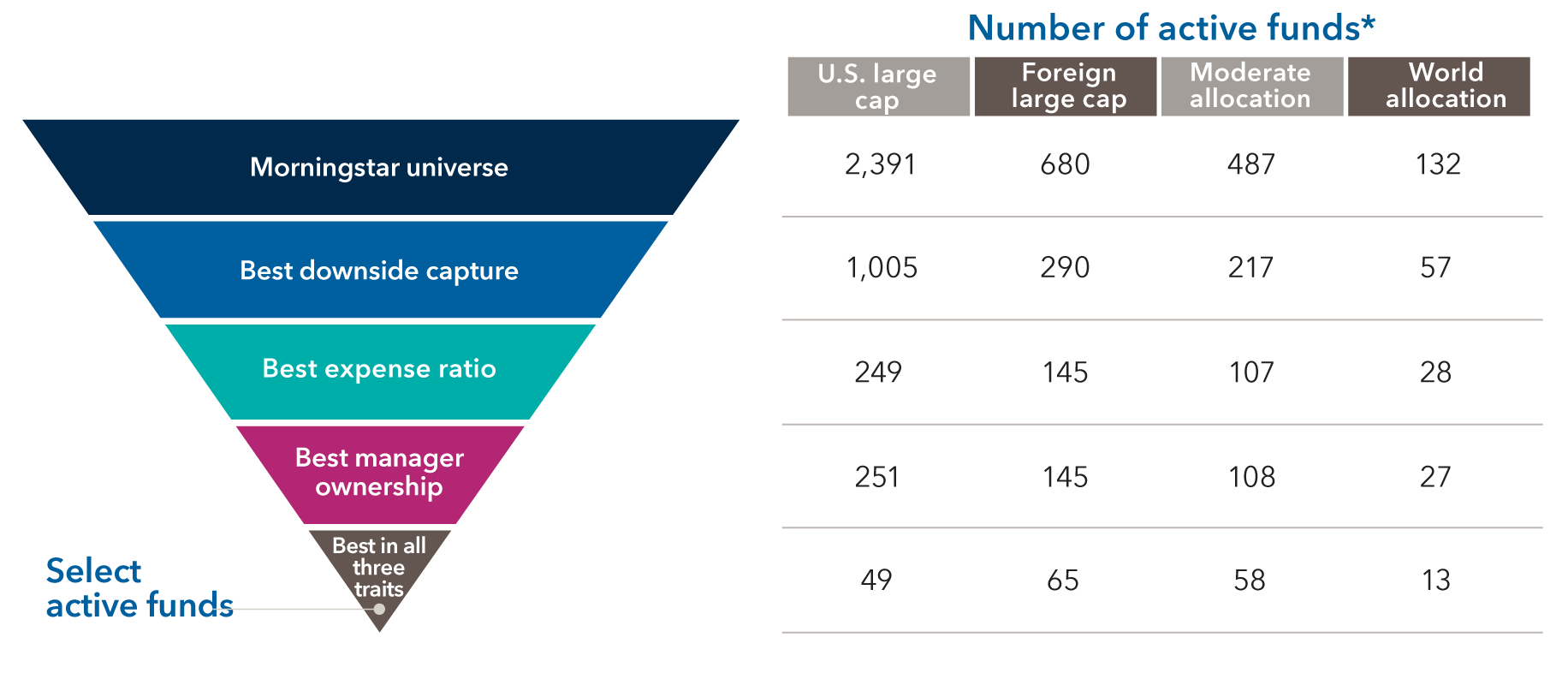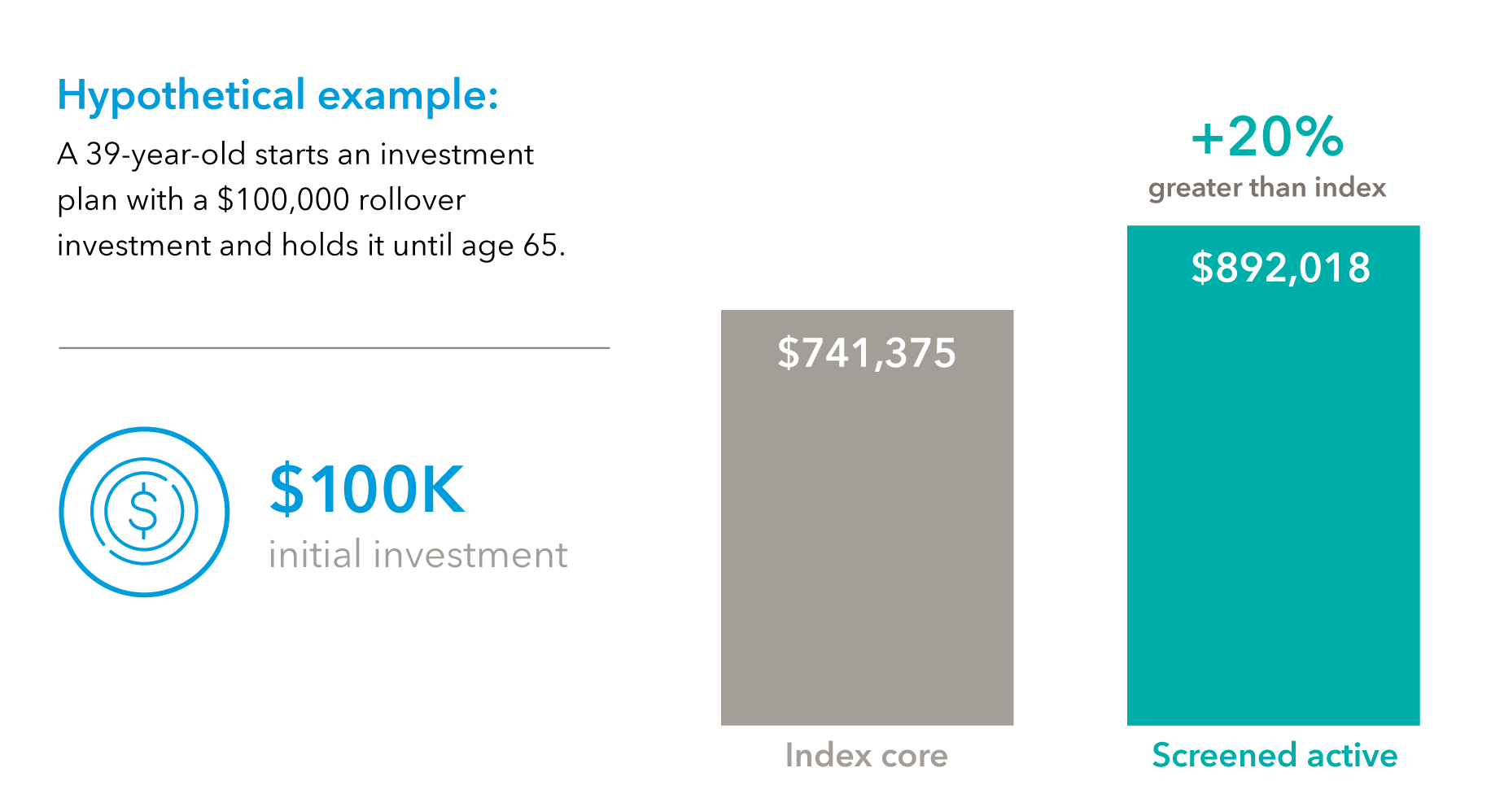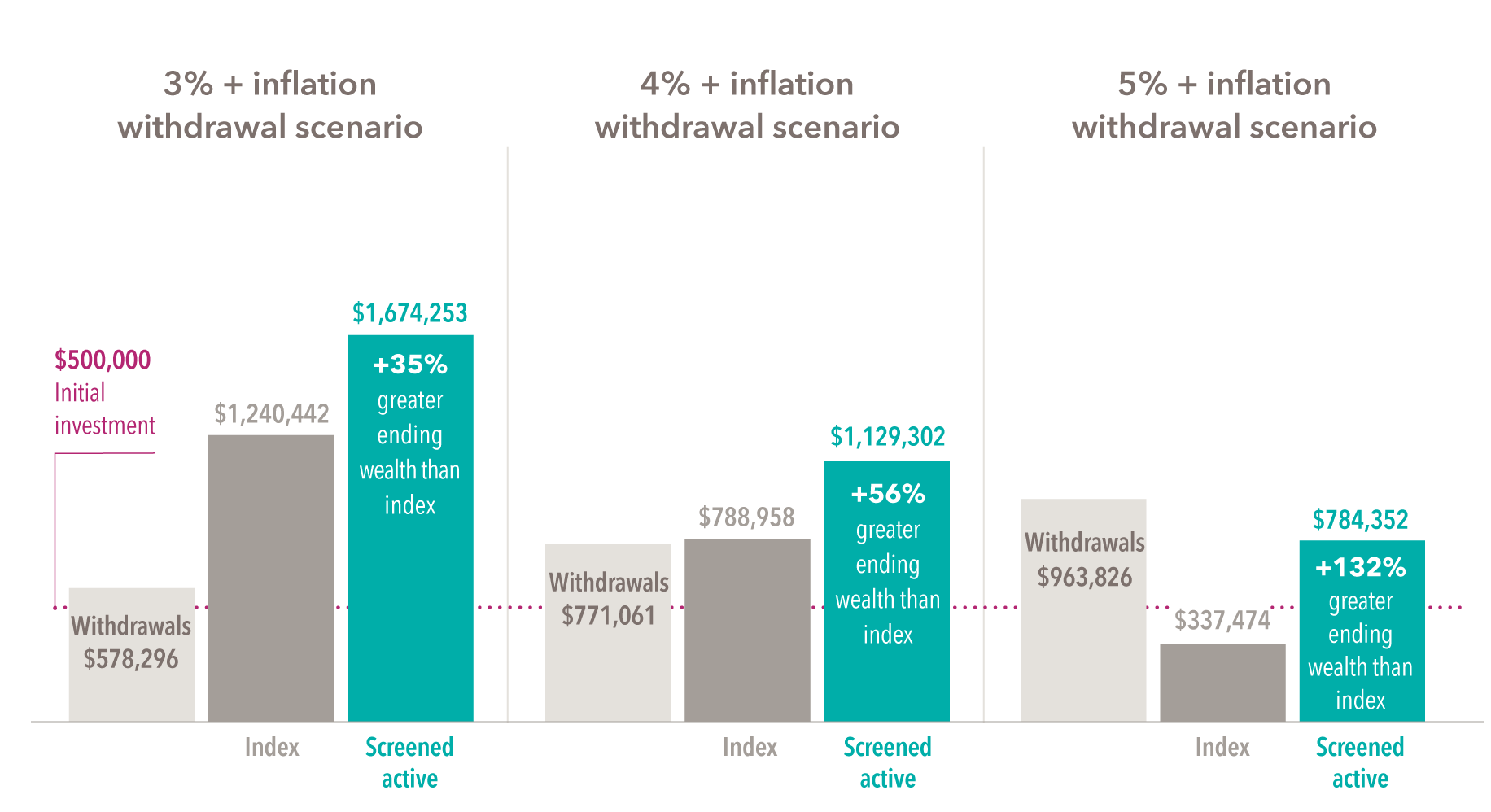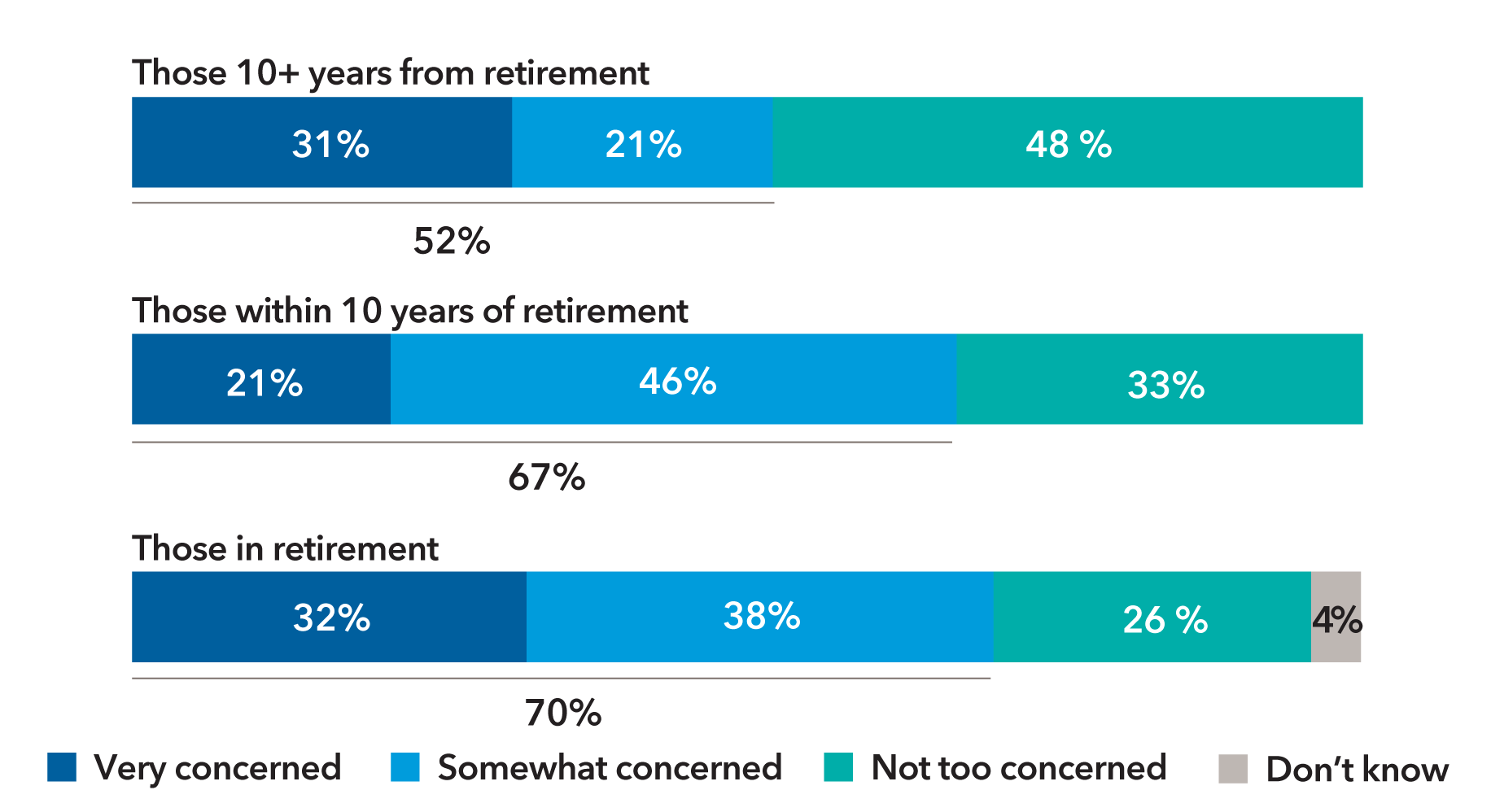With stocks and bonds falling in tandem, markets are officially in bear market territory, and 401(k) plan participants are likely wondering how their investments will respond. Amid increased volatility and many economists now forecasting an increased probability of a recession, managing risk in retirement plans is just as, if not more, important than ever. While plan sponsors and financial professionals cannot control the market, they do have control over choosing funds for their plan menus that have potential to withstand market gyrations.
November 15, 2022
Risk matters in retirement plans
The idea of risk management in retirement plans might not typically be top of mind. But a recent study by MetLife found that more than half of plan sponsors (52%) are concerned about the effect of volatility on plan participants that are at least 10 years away from retirement. The percentage increases to 67% and 70% for those within 10 years of retirement and those already in retirement, respectively.
Risk can be a disruptor for participants: Near-retirees may have to delay retirement, and retirees may have to cut spending or even return to the workforce. Younger participants could panic and move into very conservative investments, or even worse, may stop contributing all together.
That’s why it’s critical to help plan sponsors find funds that can help preserve participants’ balances amidst volatile markets while helping them benefit from their upside.
What to consider when making fund selections
To find out which strategies may have the potential to help participants weather down markets, we spent years examining factors that have contributed to better-than-peer and better-than-benchmark results.
Our research identified three common traits that consistently enhanced outcomes:
- Strong downside capture: Downside capture ratio measures a fund’s results relative to its benchmark during periods of market weakness. The lower the ratio, the better the fund held up during market declines. Active funds that have exhibited strong downside capture ratios in previous periods held up better in future down markets and, on average, delivered better long-term results.
- Low expenses: We found that funds that have lower fees than their peers, specifically funds that offer fees in the least expensive quartile, have the potential to deliver better participant outcomes. Ongoing annual expenses can have an impact on long-term results, and ultimately, participant outcomes.
- High level of firm manager ownership: We believe funds managed by portfolio managers with a high level of firm manager ownership in the fund signal high conviction in investment strategies and ideas. And it represents an alignment of interests between fund managers and participants investing in the fund.
Select equity-focused active funds had enhanced outcomes for the 26 years ending December 31, 2021


Sources: Capital Group, Morningstar. Covers the period of January 1, 1996, to December 31, 2021. Screens were based on historical fund performance in comparison with peer median. Best downside capture was defined as top 50%. Best expense ratio and best manager ownership were defined as top 25% for the U.S. large cap category (owing to its larger sample size) and top 50% for the other categories. Large-cap stocks are defined as the group that accounts for the top 70% of the capitalization of the Morningstar domestic stock universe. Foreign large-cap stocks have market caps in the top 70% of each economically integrated market (such as Europe or Asia ex-Japan); these portfolios typically will have less than 20% of assets invested in U.S. stocks. Moderate-allocation portfolios seek to provide both capital appreciation and income by investing in three major areas: stocks, bonds, and cash. These portfolios tend to hold larger positions in stocks than conservative-allocation portfolios. These portfolios typically have 50% to 70% of assets in equities and the remainder in fixed income and cash. World-stock portfolios have few geographical limitations. It is common for these portfolios to invest the majority of their assets in the U.S., Europe, and Japan, with the remainder divided among the globe's smaller markets. These portfolios typically have 20%-60% of assets in U.S. stocks.
*Comparisons used an asset-weighted methodology. This method can increase comparability between portfolios as compared with an equal-weighted methodology.
What this means for participants
So how can these three intuitive traits — strong downside capture, low expenses and high level of manager ownership — translate into better participant outcomes? To find out, we looked at hypothetical participant scenarios in both accumulation and withdrawal phases.
In the hypothetical example below, we found that over a 26-year accumulation period, a hypothetical $100,000 investment in an equal blend of the U.S. large cap and foreign large cap funds that possessed these three key traits would have delivered 20% greater wealth than the index.
The potential for greater wealth in the accumulation phase ...


Sources: Capital Group, Morningstar. Time period from 1996 to 2021. Index core consists of 50% S&P 500 and 50% MSCI ACWI ex USA, rebalanced monthly. Screened active portfolio consists of 50% U.S. large cap and 50% foreign large cap. U.S. large cap funds compromise those in the top 25% of lowest expense and highest firm manager ownership of funds after top 50% downside capture filter. Foreign large cap funds have the top 50% lowest expenses and highest 50% firm manager ownership of funds after top 50% downside capture filter. Screened active managers use the oldest share class. The funds in the hypothetical portfolio were equal weighted at the beginning of the period and rebalanced monthly. New funds that incepted during the period and funds that went obsolete (merged or liquidated) during the period were included or excluded in the monthly rebalance, respectively. Past results are not predictive of results in future periods.
… and where risk really matters: in retirement
The lower risk approach made the differences even larger in the distribution phase. The below chart depicts three hypothetical withdrawal scenarios over 26 years in retirement, all starting with a $500,000 nest egg, with initial withdrawal rates of 3%, 4% and 5%. In all three hypothetical scenarios, there would have been substantial appreciation beyond the original principal.


Source: Capital Group, Morningstar. Return of a hypothetical $500,000 initial investment, assuming an initial percentage withdrawal rate, increasing by 3% each year thereafter for inflation, for a 50% moderate allocation/50% world allocation portfolio. For the 26 years ending December 31, 2021. Index comprises 60% MSCI All Country World Index and 40% Bloomberg Global Aggregate Index. Screened active comprises a 50% moderate allocation and 50% world allocation. World allocation and moderate allocation use top 50% expense ratio and top 50% ownership after top 50% downside capture filter. The funds in the hypothetical portfolio were equal weighted at the beginning of the period and rebalanced monthly. New funds that incepted during the period and funds that went obsolete (merged or liquidated) during the period were included or excluded in the monthly rebalance, respectively. Screened active managers use oldest share class. There may have been periods when the fund(s) lagged the index(es). Market indexes are unmanaged and, therefore, have no expenses. Investors cannot invest directly in an index. Past results are not predictive of results in future periods.
The above chart shows an assumed inflation rate of 3%. Imagine the impact on risk of today’s much higher inflation rate, especially if it persists for a significant period of time.
At a 3% initial withdrawal rate, the participant withdrew over $500,000 and would have ended up with 35% greater wealth than the index. At the higher 5% rate, the participant took out over $900,000 from that same $500,000 starting point and would have ended up with 132% greater wealth than the index. If they were to try to do this with the index, they would have less money than their initial investment.
Better investment decisions drive better participant outcomes
While past results are no guarantee of similar results in future periods, these differences can be meaningful for retirees. Even a slightly higher annual return combined with greater downside protection can dramatically extend a participant’s retirement savings, providing them with more flexibility to deal with inflation and unexpected health care expenses and even the potential to leave a legacy for the next generation. With all this in mind, investment selection might be the most important decision you can help plan sponsors make.

Steve Deschenes is a director of client research at Capital Group. He has 29 years of investment industry experience and has been with Capital Group for 10 years. He holds a bachelor’s degree in psychology and social relations from Harvard.


